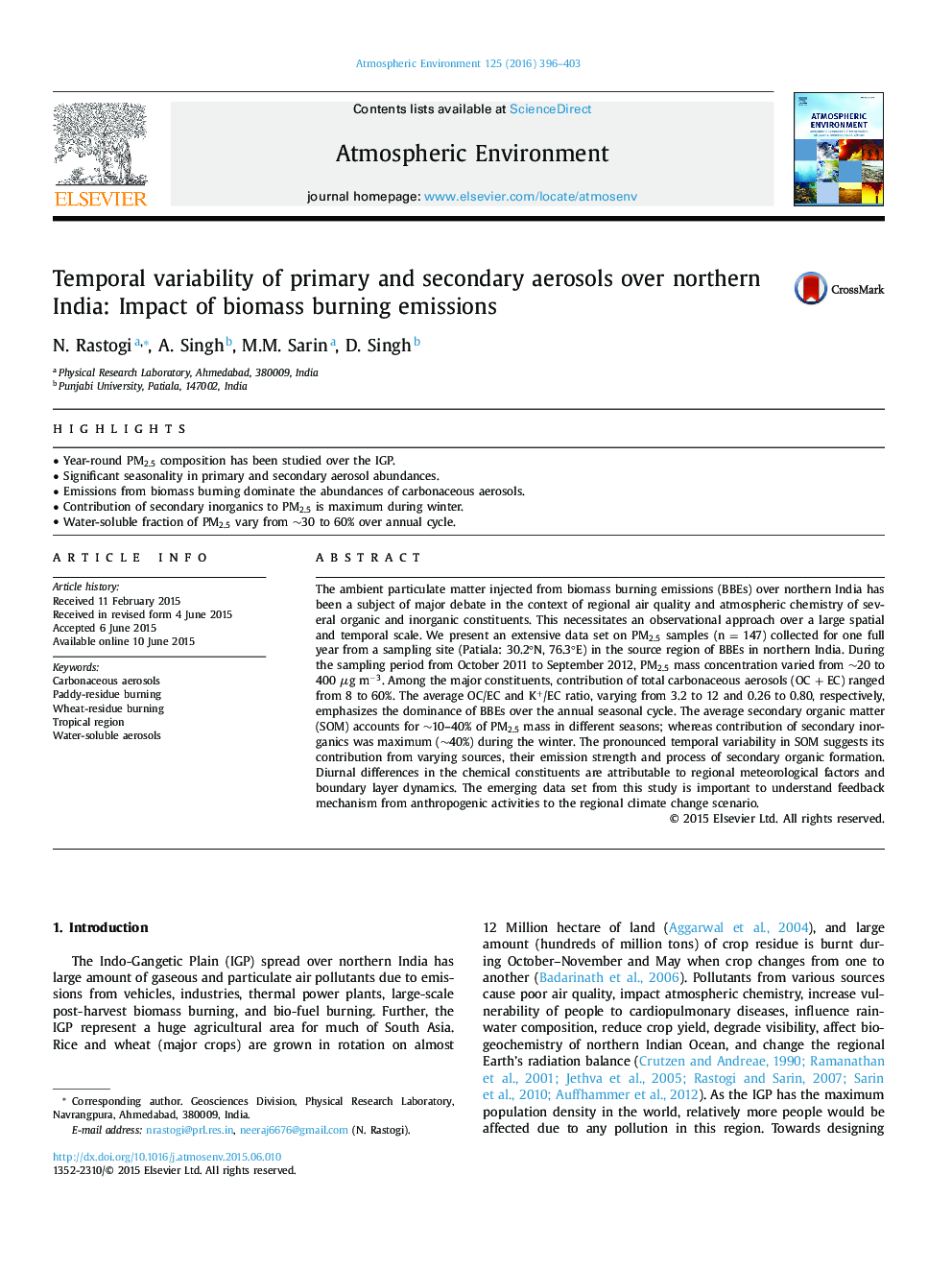| Article ID | Journal | Published Year | Pages | File Type |
|---|---|---|---|---|
| 4438070 | Atmospheric Environment | 2016 | 8 Pages |
•Year-round PM2.5 composition has been studied over the IGP.•Significant seasonality in primary and secondary aerosol abundances.•Emissions from biomass burning dominate the abundances of carbonaceous aerosols.•Contribution of secondary inorganics to PM2.5 is maximum during winter.•Water-soluble fraction of PM2.5 vary from ∼30 to 60% over annual cycle.
The ambient particulate matter injected from biomass burning emissions (BBEs) over northern India has been a subject of major debate in the context of regional air quality and atmospheric chemistry of several organic and inorganic constituents. This necessitates an observational approach over a large spatial and temporal scale. We present an extensive data set on PM2.5 samples (n = 147) collected for one full year from a sampling site (Patiala: 30.2°N, 76.3°E) in the source region of BBEs in northern India. During the sampling period from October 2011 to September 2012, PM2.5 mass concentration varied from ∼20 to 400 μg m−3. Among the major constituents, contribution of total carbonaceous aerosols (OC + EC) ranged from 8 to 60%. The average OC/EC and K+/EC ratio, varying from 3.2 to 12 and 0.26 to 0.80, respectively, emphasizes the dominance of BBEs over the annual seasonal cycle. The average secondary organic matter (SOM) accounts for ∼10–40% of PM2.5 mass in different seasons; whereas contribution of secondary inorganics was maximum (∼40%) during the winter. The pronounced temporal variability in SOM suggests its contribution from varying sources, their emission strength and process of secondary organic formation. Diurnal differences in the chemical constituents are attributable to regional meteorological factors and boundary layer dynamics. The emerging data set from this study is important to understand feedback mechanism from anthropogenic activities to the regional climate change scenario.
